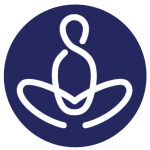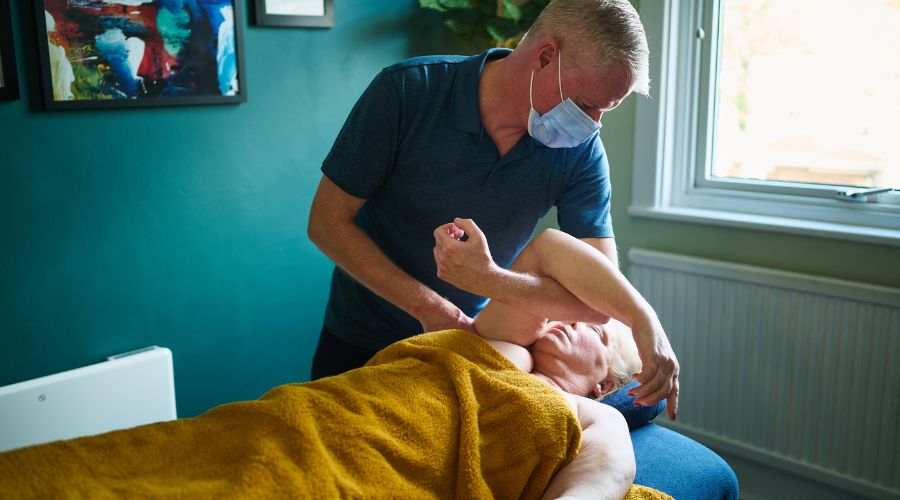Shoulder Pain Therapy in London, N13
Experience safe and effective shoulder pain treatment, incorporating myofascial release and trigger point therapy.
Understanding Shoulder Pain
Since the shoulder has such a wide range of movement, it’s quite prone to injuries and ongoing issues.
This is actually what inspired my dissertation on shoulder pain during my advanced clinical massage diploma studies.
Both my research and clinical practice in London have shown that shoulder pain conditions and diagnoses are incredibly varied.
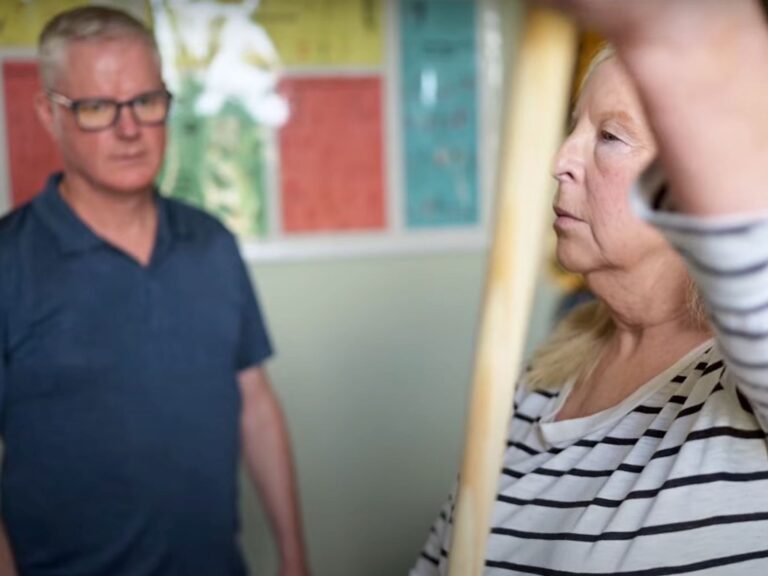
Shoulder Conditions We Treat
Frozen Shoulder
Frozen Shoulder (Adhesive Capsulitis), is a thickening and contraction of the shoulder joint capsule. With 3 phases – freezing, frozen and thawing, it tends to be more painful in the early stage, becoming more restricted in time. External rotation is the most restricted and painful movement.
Shoulder Tendinopathy
Supraspinatus tendinopathy, rotator cuff defect or rotator cuff injury are all umbrella terms for inflammation, degeneration, a tear or impingement of the supraspinatus tendon. The point of friction is under the acromion – a bony extension of the scapula. It is often caused by excessive overhead activities.
Shoulder Impingement
Subacromial impingement syndrome is synonymous with bursitis and a tendinopathy. Recent research suggests that there is no impingement and a better description would be subacromial pain syndrome. The same research found impingement surgeries were no more effective than a placebo.
Shoulder Bursitis
A bursitis is inflammation or irritation of a cushion in the shoulder called a bursa. Symptoms are similar to a tendinopathy. Both tend to produce pain in a specific zone of movement when raising the arm. It’s called a painful arc. An orthopaedic test called the painful arc test can show if the issue is more likely a bursitis or a tendinopathy.
Shoulder Arthritis
Acromioclavicular (AC) joint arthritis describes wear and tear and degeneration of tissue around the joint which causes little bone spurs. Recent studies suggest that there is often no connection between arthritis and pain and that fear of arthritis often leads to reduced activity and increased myofascial pain due to lack of movement.
Shoulder Instability
Shoulder instability is where the ligaments, muscles and connective tissue surrounding the shoulder joint struggle to maintain the head of the upper arm (humerus) in the socket (glenoid fossa). This can range from a part dislocation (subluxation) to full dislocation. People who are hypermobile tend to be most affected.
With so many shoulder pain conditions, it can seem overwhelming. However, except for instability disorders they often have very similar symptoms and so clinicians find them difficult to diagnose.
Conventional treatments include pain medication, steroid or cortisone injections, surgery, physiotherapy, and even ‘active rest,’ which basically means doing nothing.
Unfortunately, conventional treatments often have poor outcomes. and so, in search of effective treatment, people frequently arrive at myofascial release and trigger point therapy.
These techniques are the foundation of my shoulder pain treatments.
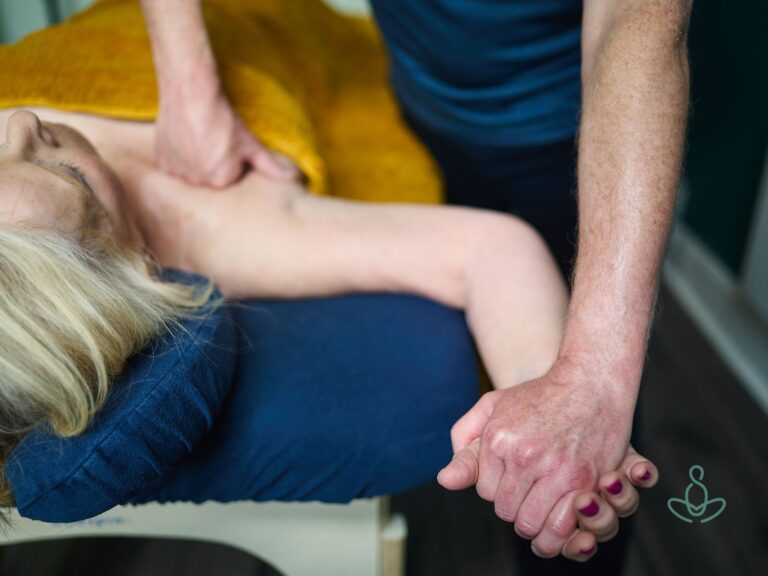
When is Shoulder Pain Myofascial Pain?
When shoulder pain persists, regardless of the condition, the connective tissue (fascia) around the shoulder is going to be affected.
When the fascia or myo-fascia (muscle fascia) becomes hard, stuck and restricted, it can be referred to as Myofascial pain syndrome.
Trigger points are tight, sensitive knots in the fascia that cause pain and can refer pain more broadly around the shoulder.
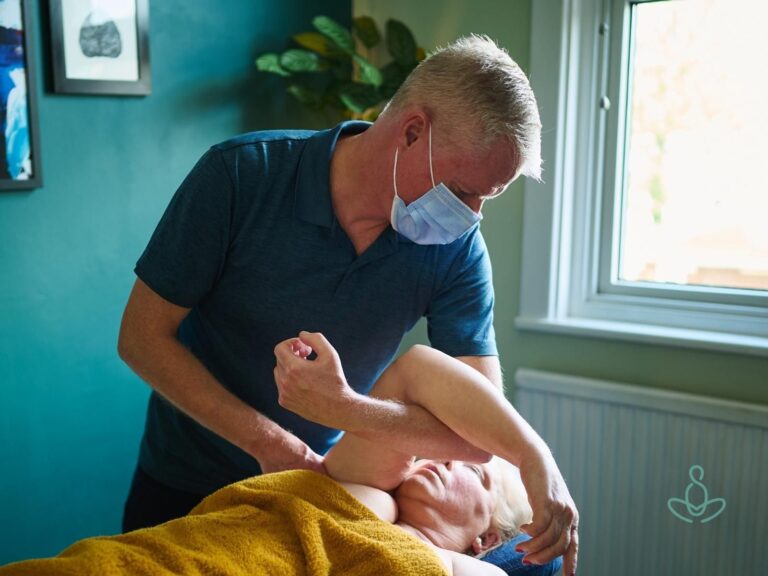
How stress can prolong shoulder pain
Our emotions and fascia are closely linked. The fascia is full of sensory receptors, so when we worry about pain or are stressed, our body tenses.
This tension creates tightness in the fascia, which can cause more pain and stiffness in the shoulder and other areas.
The more we worry about our pain, the more our body tenses up, and so the cycle continues.
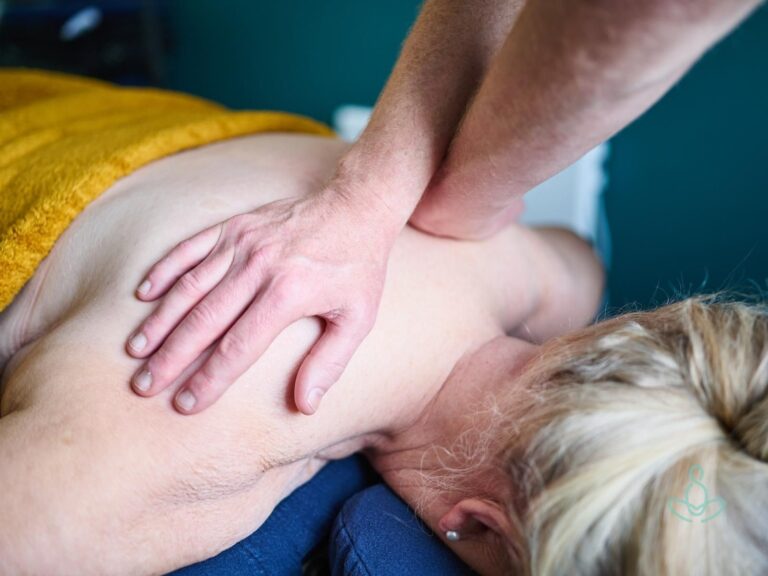
Myofascial Release Therapy London: A Path to Shoulder Pain Relief
Myofascial release therapy is a specialised treatment that focuses on releasing tension and restrictions in the fascia.
This gentle therapy works with the nervous system to encourage the body to release tension and restore mobility.
It can be highly effective in providing shoulder pain relief, particularly for those suffering from myofascial pain syndrome.
By targeting trigger points around the shoulder and restoring flexibility to the fascia, myofascial release can alleviate pain, improve range of motion, and promote healing.
What to Expect During Myofascial Release for Shoulder Pain
As we have seen, there are different causes and contributors to a TMJ disorder.
Prior to our appointment you will be asked to give a brief history of your symptoms as well some medical details. This will help us with our in-person assessment and treatment.
Our assessment will include specific orthopaedic testing on the temporomandibular joint as well as range of motion testing of the neck and shoulders.

Before your appointment, we’ll ask you to give us a brief history of your symptoms and medical details.
This will help me assess your condition and develop a treatment plan specifically for you.
The assessment might involve checking specific things about your shoulder joint and how far you can move your neck and shoulders.
Based on this, we’ll agree on some goals and a treatment plan that uses myofascial release, trigger point therapy, soft tissue release and light stretches.
I will also recommend some self-care exercises for you to do at home between our sessions.
You should expect to see a significant reduction in symptoms in 3 to 4 sessions and restored function within 6 sessions. The first few will be about a week apart. As you start feeling better, we’ll space out the sessions.
Shoulder Treatment Reviews
Overcoming Chronic Shoulder Pain: Katy's Story
Jo's experience with Frozen Shoulder
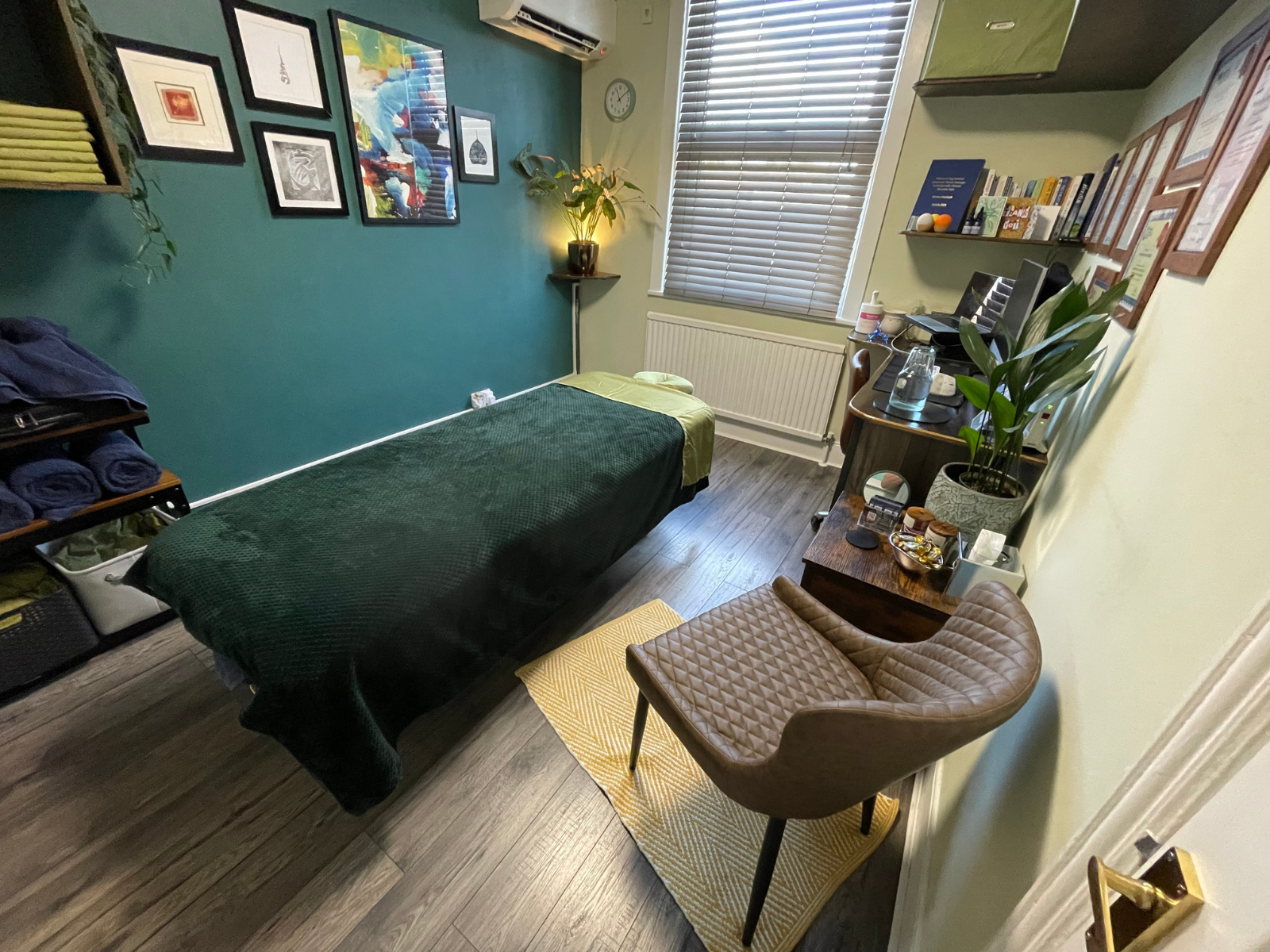
Your First Visit Appointment determines how we will progress to achieve your desired outcome.
An hour and a quarter gives us plenty time for assessment, goal setting, treatment and a self-care plan.
During our session we will agree our treatment plan incorporating Advanced Myofascial Release and Jing Method Clinical Massage.
First Visit Appointment
75-minutes- Discuss signs and symptoms
- Assessment and Range of Motion Testing
- Special Orthopaedic Testing if necessary
- Discuss and Agree Goals
- Discuss and Agree Treatment Plan
- Advanced Myofascial Release or Jing Method Treatment
- Re-assessment and Testing
- Agree and Review Self-Care Plan
Your First Visit
Check availability and book your appointment
It’s easy to book an appointment online. If your preferred time is not shown, please call us on 0207 661 7044.
